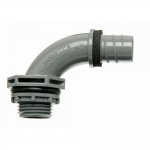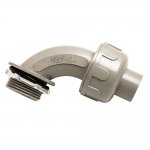Mike106
Member
- Location
- Atlanta, Georgia, USA
(Preface: I am a product manager trying to understand electrician use cases of products, I am not an electrician)
In Home Depot, I am able to purchase a couple of liquid tight fittings, and I'm trying to figure out a couple of things:
In the PVC bay is this product.
https://www.homedepot.com/p/1-2-in-...-1-Piece-Fitting-20-Pack-LN20DA-CTN/202203078

In the liquid tight part of the aisle, I can choose from metallic and non-metallic fittings, like this one:
https://www.homedepot.com/p/1-2-in-...-Conduit-Fitting-Connector-58133802/204755898

In Home Depot, I am able to purchase a couple of liquid tight fittings, and I'm trying to figure out a couple of things:
- Why are electricians buying one over the other?
- Do they perform the same? Would you consider them substitutes?
- Why would a retailer carry both SKUs?
In the PVC bay is this product.
https://www.homedepot.com/p/1-2-in-...-1-Piece-Fitting-20-Pack-LN20DA-CTN/202203078

In the liquid tight part of the aisle, I can choose from metallic and non-metallic fittings, like this one:
https://www.homedepot.com/p/1-2-in-...-Conduit-Fitting-Connector-58133802/204755898


